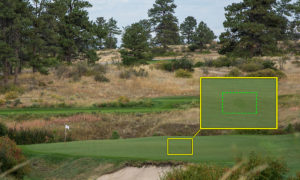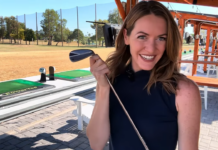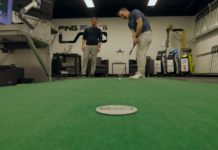GolfTEC Approach: Aim small to the biggest target for an IMMEDIATE impact on your scoring.
By Josh McKinley (with Jon Levy)

If any tournament on the PGA Tour demands impeccable course management to play well, it’s this week’s Players Championship at TPC Sawgrass. Even the best players in the world will fall victim to Pete Dye’s diabolical design many times, making bogeys or worse from just a slight misplacement in execution.
“You have to be pretty spot on. It’s a very fine line at this golf course.” — Defending champion, Rickie Fowler, in reference to the challenging design of TPC Sawgrass.
That said, these players’ course management tactics are as good as it gets and since their attention to it will be on high alert all week, let’s look at the strategies many employ to help their games, and what the rest of us can can take away to help our own.
Just a slight adjustment … in aiming strategy.
Raise your hand if any of the following applies:
- Do you often find yourself missing greens on the short side of the pin?
- Is it common for you to hit a solid shot — one you feel you executed successfully — but it just barely misses the green and and you walk away with bogey or worse?
- Do you often feel like you need Phil Mickelson in your stead to pull off an incredible flop shot from the most impossible situation ever?
If you answered yes to any of these, you’d likely benefit greatly from adjusting your aiming strategy. Here’s a simple philosophy I use myself to score my best: Aim small to your biggest target.
Pick your biggest target.
When I take clients out on the course for a playing lesson, a failed approach in aiming strategy is one of the biggest and most common issues I see inhibiting scoring. Simply put, a lot of golfers get stuck in the rut of firing directly at the flag and, whether they realize they’re doing this or not, flag hunting is often NOT the best option and causes many good shots to end up in bad areas.
 The fix to this you should first understand not just where the ultimate target (flag) is, but to also notice everything around it as in where the most trouble lies, and where the most ideal areas are to putt or chip from on the next shot.
The fix to this you should first understand not just where the ultimate target (flag) is, but to also notice everything around it as in where the most trouble lies, and where the most ideal areas are to putt or chip from on the next shot.
I call this, knowing your biggest target.
Let’s say, for example, the flag is in the back-left portion of the green. It’s not only tucked behind a bunker, but there’s trouble all along the left and back of the green, while there’s conversely a lot of green open short and to the right of the pin, with a slope moving gently uphill from the front of the green toward the back.
Your biggest target here is — you guessed it — short of the flag and to the right, considering the slightest miscue left or long of the flag with your approach will result in a missed green and near-impossible up-and-down, while a shot successfully put into this area will leave an uphill birdie putt and a slight miscue will still be OK.

Then aim small!

Now that you’ve identified your biggest target, it’s time to “aim small,” which creates a new (very specific) target replacing the flag you were previously honed in on. This can be an easily-visible dark or light area of grass on the green, or something else clearly identifying a specific target within this larger area to focus on.
This idea is a common practice for the players you’ll see this week (i.e. playing away from the pin on No. 17), and it’s also widely adopted in other sports like darts and archery, where the similar idea of, “aim small, miss small,” is commonplace.
The point is to create a new, specific target to focus on, instead of getting lost in the now bigger, more nondescript target area. It should also be noted that your new philosophy may take some time to truly adopt (Read: It’s tough at first to mentally allow yourself to aim away from the flag.), but once you do your new method of “flag hunting” will be one to the tune of drastically lower scores!
As always, talk to a local Certified GolfTEC Coach who can explain this further and help take your scoring to the next level with on-course playing lessons.









